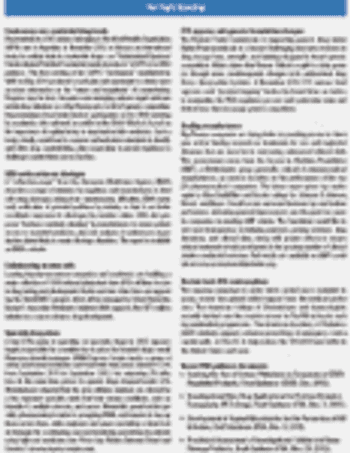
The company is cited for using unapproved visual-inspection methods for finished parenteral drugs and conducting inadequate visual inspections.

The company is cited for using unapproved visual-inspection methods for finished parenteral drugs and conducting inadequate visual inspections.

Modular containment room at Belfast facility allows studies of biologics and vaccines.

Bills to regulate drug compounding and establish a national track and trace system face political and policy differences.

A science- and risk-based approach to verify and demonstrate that a process operating within predefined specified parameters consistently produces material that meets all its critical quality attributes.

Ranbaxy's $500 million settlement for producing adulterated drugs and fradulent data provides a cautionary tale for patients, FDA, and drug manufacturers.

A unique demographic and payer mix make ASEAN an increasingly attractive region.

Companies can use metrics as a tool to help drive positive change and quality process improvements.

FDA addresses shortages of drugs needed to treat premature infants and patients unable to eat or drink by mouth.

Company receives notice from FDA for not fully investigating foreign particles in APIs and finished products from its facility in Ingelheim am Rhein, Germany.

FDA has released guidance on best practices for conducting and reporting pharmacoepidemiologic safety studies.

EMA clarifies biosimilars guidelines.

Manufacturers work with international authorities to harmonize drug registration and supply-chain oversight.

FDA issues draft guidance to minimize medication errors.

Third compounding pharmacy recalls products due to FDA inspection.

FDA has released Guidance for Industry: Non-Penicillin Beta-Lactam Drugs: A CGMP Framework for Preventing Cross-Contamination.

FDA inspections of compounding pharmacies manufacturing sterile-drug products lead to voluntary recalls.

FDA's FY 2014 budget includes more than $10 million above the 2012 budget for inspections of products and ingredients manufactured in China.

FDA inspections of compounding pharmacies result in FDA-483 citations.

EU authorities are stepping up their efforts to incorporate QbD principles.

Discussions are underway as the pharmaceutical sector calls for greater consistency in the global monitoring of GMP compliance and quality testing of APIs and finished medicines.

Shortages spur efforts to overhaul manufacturing oversight.

FDA talks about the changing scope of regulatory science.

Shortages spur efforts to overhaul manufacturing oversight.

The management board of the European Medicines Agency (EMA) has endorsed the agency?s work programme and budget for 2013, which includes a budget of EUR231.6 million, a slight increase over 2012.

FDA has issued a draft guidance to assist applicants in the submission of summary-level clinical-site data.